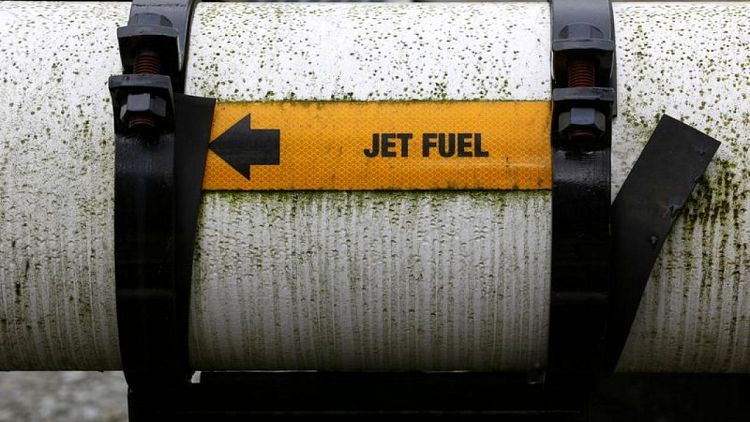By Koustav Samanta, Bozorgmehr Sharafedin and Stephanie Kelly
(Reuters) - Restrictions on long-distance flights and the surge in COVID-19 in India will keep jet fuel demand below pre-pandemic levels over the coming months, even as an easing of lockdown in some parts of the world boosts jet fuel demand.
Vaccination success and reduced infection rates in Western countries are allowing travel to resume.
It will, however, be dominated by short-haul flights, which account for almost two thirds of the total fuel used by the sector, but on average use around 35 times less fuel than long-haul flights, the International Energy Agency estimates.
The result will be jet fuel demand of around 5.8 million barrels per day (bpd) this year, almost 30% higher than 2020, but below the 8 million bpd of 2019 before the pandemic struck, energy consultancy FGE says.
Goldman Sachs expected jet fuel demand would rise to 3.9 million bpd in May, compared to the low of 2.2 million bpd in May 2020. It predicted demand of almost 5.5 million bpd by the end of the year, compared with 7 million bpd at the same time in 2019.
"You see the passenger numbers are recovering, but they are flying shorter distances, so the relationship between the passenger number and the jet fuel demand is distorted," Cuneyt Kazokoglu, head of oil demand analysis at FGE, said. "For the full recovery, we need international travel to recover as well, and for that we have to reach a certain level of vaccination, not just in a couple of countries."
HOPE-DRIVEN RISES
Hopes for more travel have driven airline and airport stocks higher. Among the gainers, Lufthansa has lowered its capacity forecast for flights this year, but predicted a gradual demand pick-up in April-June and a "significant market recovery" in the second half, citing moves by the European Union to open up transatlantic travel to vaccinated U.S. visitors.
Despite the buzz, there is a huge disparity in flight bookings as the rate of vaccine rollouts and infections vary, while countries with successful vaccine programmes are reluctant to allow unlimited travel.
Britain on Friday said it would allow international travel to resume from May 17, but would limit the number of destinations open for quarantine-free holidays to 12 countries.
U.S. passengers booked 550,000 more flight seats last week compared to the week before, aviation data analysis firm OAG found, while India had 174,000 fewer seats and Japan was down by 121,000.
China stands out as its flight capacity last week exceeded pre-pandemic levels. Scheduled flight capacity for the week to May 3 in China was 8.7% higher compared with the corresponding week in 2019, the OAG said.
Even then, China's bookings are mostly domestic.
ARBITRAGE
The weak market for jet fuel consumption in the East has opened arbitrage for cargoes to the West. April’s total import volumes from the East of Suez to Europe were at their highest in six-months, and there were expectations that the re-opening of European markets would stimulate more imports. U.S. jet demand is expected to average 1.3 million bpd in 2021, up from 1.09 million bpd in 2020, but down from 1.75 million bpd in 2019, Suzanne Danforth of Wood Mackenzie said. “The pace of vaccination has outpaced daily cases, which have plateaued in the last month or so,” Danforth said. “That has enabled or encouraged folks to get out and for that mobility to increase and to potentially book travel.” The four-week average for U.S. jet fuel demand rose to 1.29 million bpd in the week to April 16, the highest since April 2020, U.S. Energy Information Administration data showed. It has since eased to 1.2 million bpd. Downward pressure on demand is coming from restrictions on busy international routes, especially to India, where COVID-19 cases are still surging.
Wood Mackenzie expects India's jet fuel demand to decline 6.5% in the second quarter from the first quarter.
Woodmac research analyst Qiaoling Chen estimated the number of India’s domestic flights in April dropped 13% below March, adding she also expected fewer international flights given flight bans issued by some countries.
(Reporting by Koustav Samanta in Singapore, Bozorgmehr Sharafedin in London, Stephanie Kelly in New York; editing by Barbara Lewis)



